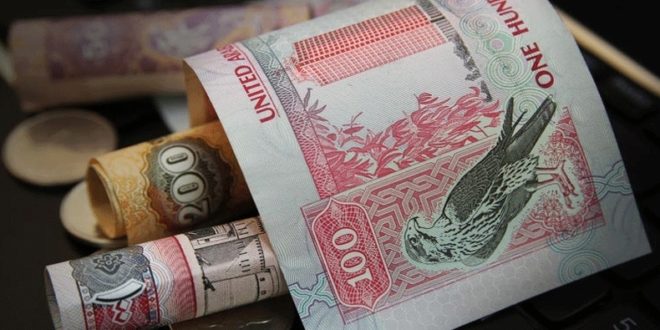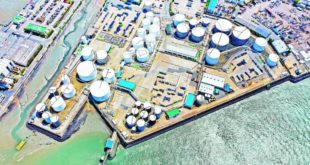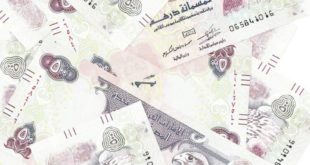Abu Dhabi, June 12: The banking sector in the country continued its growth momentum during the first quarter of this year, recording record levels in terms of the growth of assets, credit, deposits and investments, supported by the strength and durability of the national economy.
According to the statistics and data of the Emirates Central Bank, the total assets of the banking sector rose to record levels, in addition to the growth of bank credit and deposits of residents and non-residents, while the total foreign assets of the Central Bank exceeded the barrier of 537 billion dirhams, for the first time in its history.
The investments of banks operating in the country exceeded the barrier of 548 billion dirhams, and the value of transfers executed in the banking sector in the country through the UAE system for financial transfers increased to more than 3.89 trillion dirhams during the first quarter of this year.
The Central Bank of the Emirates said, in the first quarter report on monetary and banking developments, that the total assets of banks operating in the country on a quarterly basis increased by 2.6% to reach 3.765 trillion dirhams with the first quarter of this year, while it increased on an annual basis by 12.8%, while it increased Total bank credit on a quarterly basis increased by 0.9% to reach 1.896 trillion dirhams at the end of the first quarter of this year, while it increased on an annual basis by 3.5%.
The total deposits of resident and non-resident customers with banks operating in the country rose on a quarterly basis by 3.8%, and on an annual basis by 14.9%, to reach 2.306 trillion dirhams at the end of last March, and residents’ deposits increased on a quarterly basis by 4.1% to 2.092 trillion. dirhams at the end of the first quarter of this year, while non-resident deposits increased on a quarterly basis by 0.4% to 213.4 billion dirhams.
Foreign assets.
The total foreign assets of the Central Bank increased on a quarterly basis by 8.8% to 537.4 billion dirhams at the end of the first quarter of this year. This is due to quarterly increases in current account balances and deposits with banks abroad by 8.3%, and in foreign securities by 12.2%. %, and in other foreign assets by 2.1%.
monetary developments.
Money supply “N1”, which consists of cash circulating outside banks (exported cash – cash at banks) in addition to cash deposits, increased on a quarterly basis by 3%, to reach 759.3 billion dirhams at the end of the first quarter of this year, and rose by An annual basis of 4.3%.
The “N2” money supply, which contains “N1” in addition to quasi-cash deposits (savings and time deposits for residents in dirhams – deposits for residents in foreign currencies), increased on an annual basis by 5% to 1.788 trillion dirhams at the end of the first quarter of this year, while it increased On an annual basis, it increased by about 12.2%.
The “N3” money supply, which contains “N2” plus government deposits with banks and the Central Bank, rose on a quarterly basis by 4.5% to 2.196 trillion dirhams at the end of the first quarter of this year, while it increased on an annual basis by 16.5%.
National banks.
The number of locally established banks, with the exception of investment banks, remained constant at 22 banks at the end of the first quarter of this year, and the number of national bank branches reached 494, while the number of electronic banking service units affiliated to these banks increased to 47 units, and the number of exchange offices remained constant at 21 offices at the end of the first quarter of this year.
The number of GCC banks remained constant at 6 banks at the end of the first quarter of this year, in addition to one GCC business bank, and the number of these banks’ branches remained constant at 6, and the number of other foreign banks reached 22 banks with 66 branch. The number of electronic banking service units for these banks remained constant at 21 units, and the number of exchange offices for these banks remained constant at one office during the first quarter of this year.
Technological developments.
The Central Bank stated that technological and structural developments in the financial sector in the UAE have led to increased access to mobile banking applications, online banking services and the ease of using ATMs over the past several years, and these improvements are also investing in achieving the expected results through Enhancing smooth operations of the banking system.
At the end of the first quarter of this year, the number of financial institutions licensed by the Central Bank, including business banks, representative offices, financing companies, exchange shops and brokerage offices in currency trading and mediating in money market operations, reached 11, 72, 16, 84 and 3, respectively. While the number of ATMs of banks operating in the country reached about 4,425 at the end of March 2023.

 Media ININ Economy We Trust
Media ININ Economy We Trust







